What Happened To Mars?
What Happened to Mars?
Billions of years ago, Mars was a very different world. Liquid water flowed in long rivers that emptied into lakes and shallow seas. A thick atmosphere blanketed the planet and kept it warm.

Today, Mars is bitter cold. The Red Planet’s thin and wispy atmosphere provides scant cover for the surface below.

Our MAVEN Mission
The Mars Atmosphere and Volatile EvolutioN (MAVEN) mission is part of our Mars Scout program. This spacecraft launched in November 2013, and is exploring the Red Planet’s upper atmosphere, ionosphere and interactions with the sun and solar wind.

The purpose of the MAVEN mission is to determine the state of the upper atmosphere of Mars, the processes that control it and the overall atmospheric loss that is currently occurring. Specifically, MAVEN is exploring the processes through which the top of the Martian atmosphere can be lost to space. Scientists think that this loss could be important in explaining the changes in the climate of Mars that have occurred over the last four billion years.
New Findings
Today, Nov. 5, we will share new details of key science findings from our ongoing exploration of Mars during a news briefing at 2 p.m. EDT. This event will be broadcast live on NASA Television. Have questions? Use #askNASA during the briefing.
Make sure to follow us on Tumblr for your regular dose of space: http://nasa.tumblr.com
More Posts from Astrotidbits-blog and Others
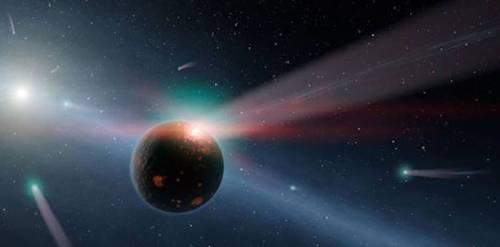
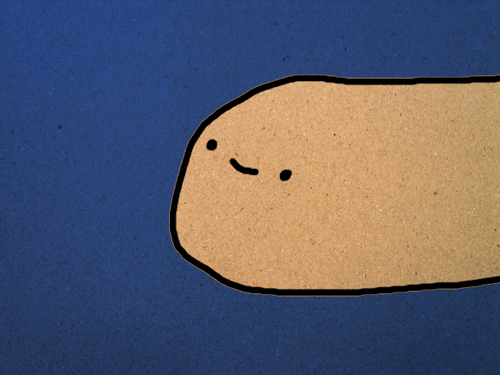
Comets may hold the secret to the origin of life on Earth
We’ve studied life on Earth extensively, but we still have no idea where it came from. Some scientists think it may have spontaneously arisen on Earth by some unknown process. Others think the ingredients for life were delivered here by comets crashing into Earth in the early days of the solar system. The latter theory just got a huge boost.
Follow @the-future-now
How do we know light is a wave?
Before I answer this question, I’ll need to briefly go over a wave property called superposition. Basically, superposition is the idea that two waves can be in the same position at the same time, and interfere with each other:
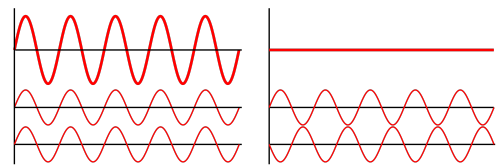
When the two waves add to each other and make a larger wave, we call this constructive interference. When the waves cancel each other out, we call this destructive interference.
Now we’re going to move on to the Double Slit Experiment. Basically, you shine a beam of light at a piece of metal, cardboard, etc with two slits in it, with a surface behind it where you can see the light hit it.
If light is a wave, what we’d expect to see would be an interference pattern created by the light from the first slit interfering with light from the second slit, which is exactly what we see. It’s a pattern of constructive interference (brighter regions) and destructive interference (darker regions), looking like this:

These images are helpful:
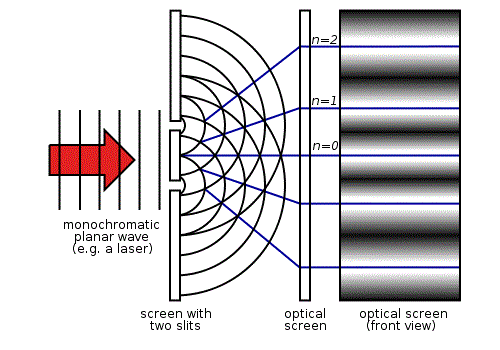
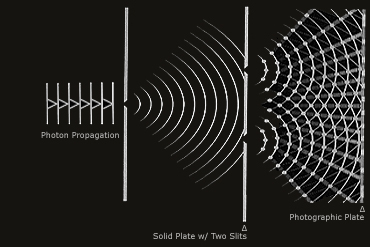
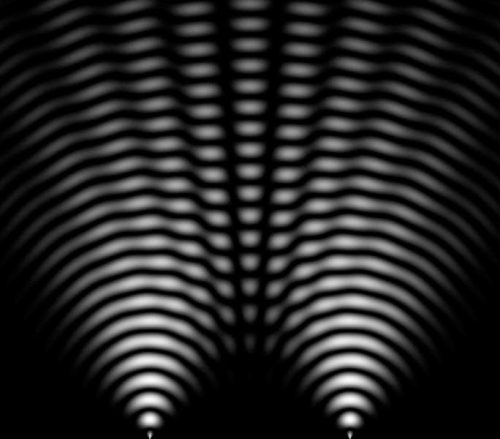
that is how we know light acts as a wave!!
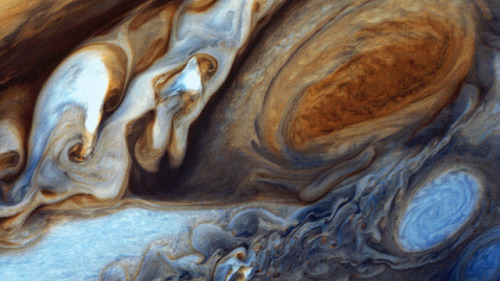
Jupiter’s Great Red Spot as Viewed by Voyager 1 in February, 1979. The Great Red Spot is an anticyclone, three and a half times the size of Earth located in Jupiter’s southern hemisphere. [1920 × 1080]
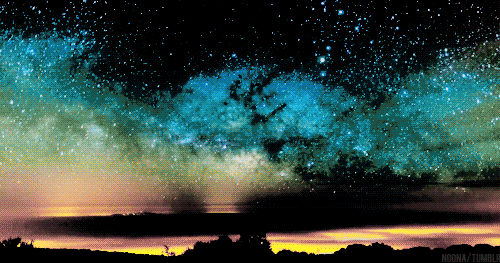
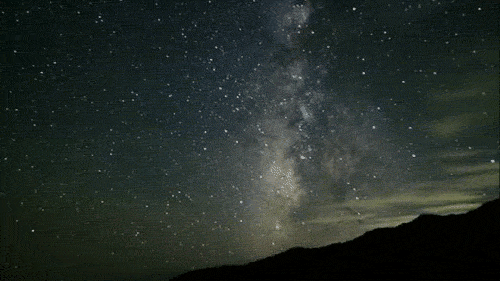
Milky Way & shooting stars.
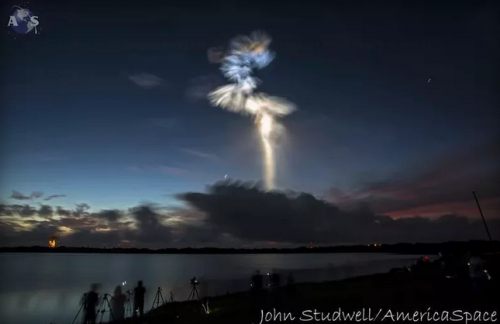
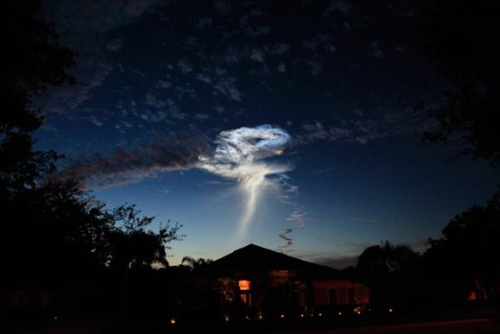
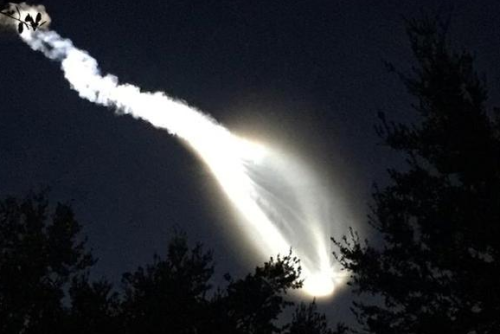
This morning, an Atlas V rocket launched from Cape Canaveral, Florida, carrying a US Navy communications satellite into space.
It was another smooth take off for the United Launch Alliance, the company that manufactures the Atlas V. It was a particularly beautiful launch as well; the rocket left a spectacular multi-colored trail in its wake as it ascended into space
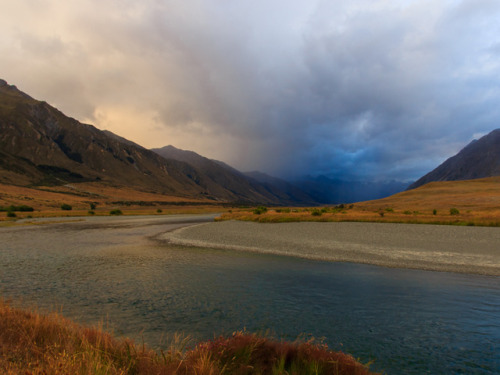
Blue Spot. West Coast New Zealand.
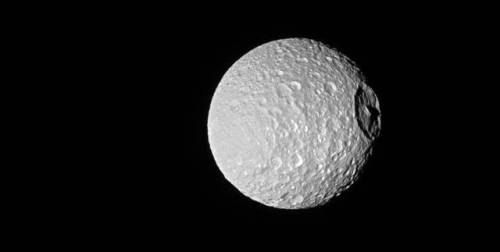

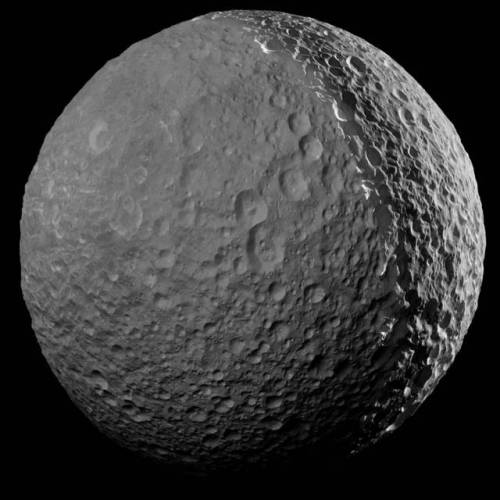
Cassini gets up close & personal with icy Mimas
The first two images show off the giant Herschel crater, a distinguishing feature of this moon. The second gives a better view of the mountain peak within the crater. The shadows cast by the crater and mountain peak give a glimpse into just how massive this crater truly is. The last image is one of the clearest images of Mimas to date.
General Ham: Digital Mode Introduction
This is probably a bit more repetition, but well worth the time! So digital modes are where data are encoded as bits instead of in waves, and some are created commercially, while others are created by amateurs!
Digital modes consist of two things: a protocol and a method of modulation. A protocol is the set of rules that control the encoding, packaging, exchanging and decoding of digital data. For example, packet radio uses the AX.25 protocol standard. This standard says how each packet is constructed, how packets are exchanged, what characters are allowed, and so forth. The protocol standard doesn’t say what kind of transmitter to use or what the signal will sound like on the air.
Digital mode signals are restricted to the CW/data segments of each band and most digital mode operation is close to the top of the CW segment. Calling frequencies for the popular digital modes are incorporated into band plans and are usually the lowest frequency of operation with operators moving up in frequency as activity increases.
For example on 20m, most PSK31 signals are found near 14.070 MHz. RTTY and other digital mode signals are found above that. The modems used for digital signals often do not recognize signals from CW or other digital modes.
Here’s the Digital Signal Band Plan:
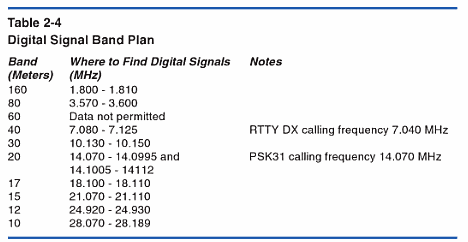
@atdiy/@tymkrs
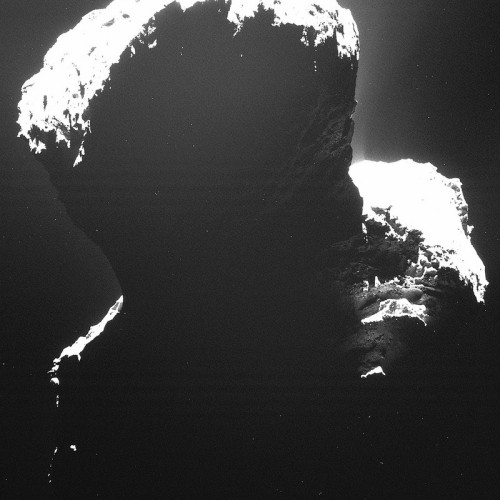
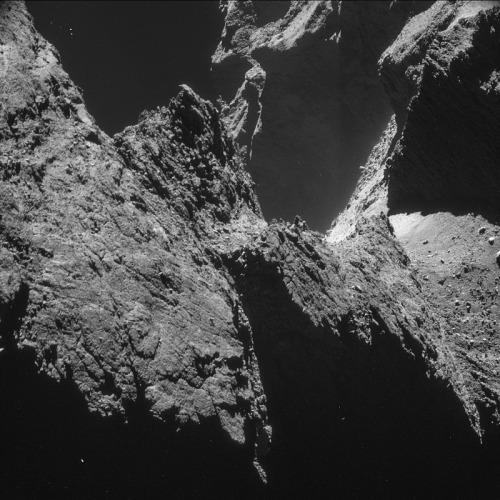
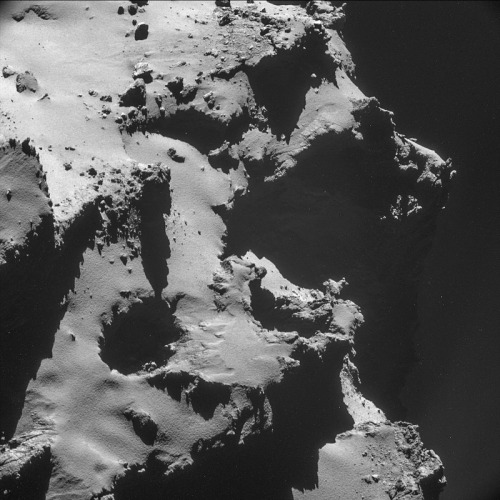
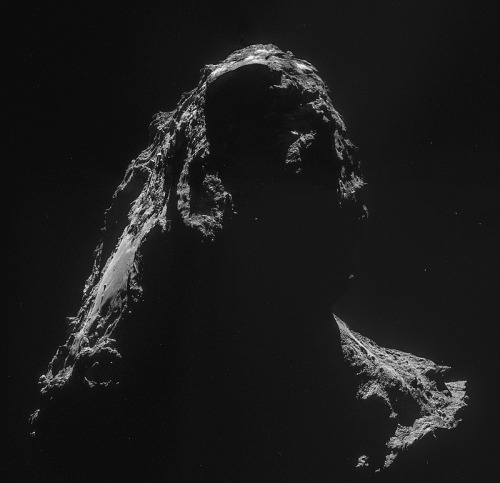
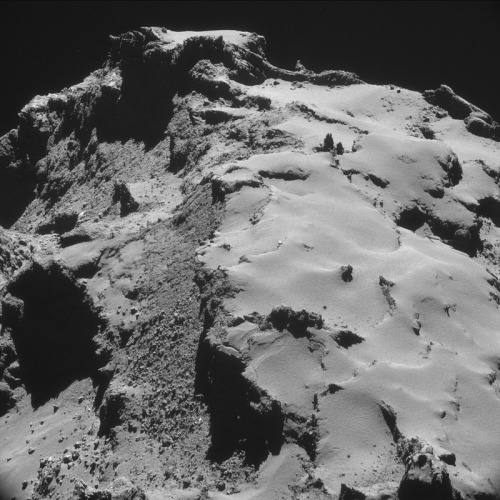
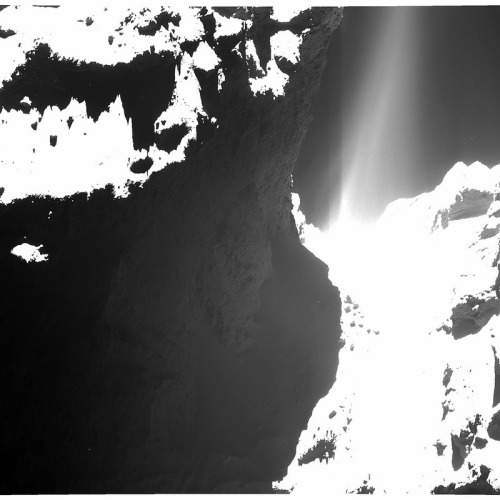
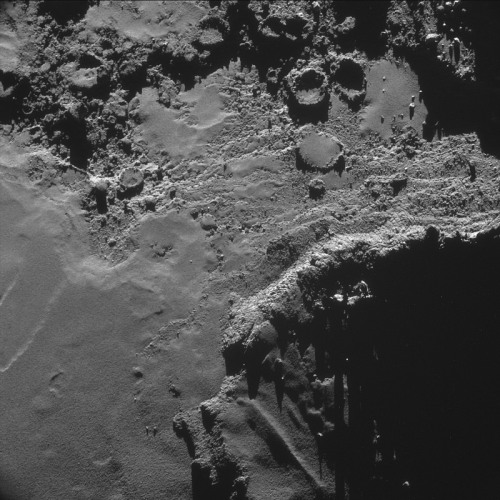
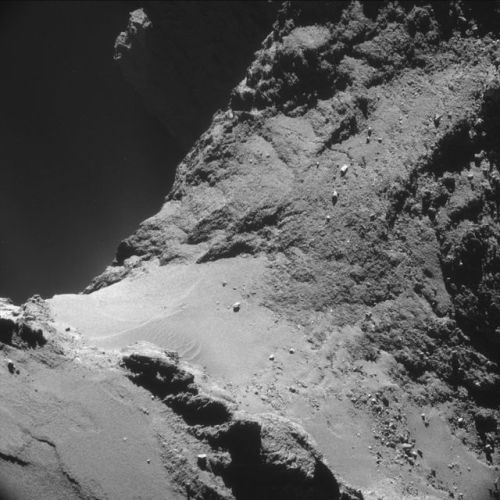
This is what a comet looks like, up close and personal.
PHOTOS FROM AN ALIEN WORLD.
I am so excited I can’t even. Source: ESA’s Flickr feed.
The first Space Launch System hardware from NASA’s Michoud Assembly Facility in New Orleans just arrived at NASA’s Marshall Space Flight Center in Huntsville, Alabama. We take a minute to introduce you to the crew of NASA’s barge Pegasus. The crew made an 18-day journey on the barge leaving New Orleans on April 28 and arriving at Marshall on May 15. The barge delivered a structural test version of the core stage engine section of SLS, NASA’s new heavy-lift rocket. Pegasus will deliver four test articles of the rocket’s core stage to Marshall for tests that will simulate the forces experienced during launch. Pegasus will later ferry the flight-ready core stage to NASA’s Stennis Space Center near Bay St. Louis, Mississippi, for testing and then to NASA’s Kennedy Space Center in Florida for integration of the SLS flight vehicle in the Vehicle Assembly Building.
-
 ohturtlesmyturtles liked this · 4 years ago
ohturtlesmyturtles liked this · 4 years ago -
 noorhb reblogged this · 4 years ago
noorhb reblogged this · 4 years ago -
 miraculousgoldenarmy liked this · 5 years ago
miraculousgoldenarmy liked this · 5 years ago -
 goneau2xr reblogged this · 5 years ago
goneau2xr reblogged this · 5 years ago -
 xnzda reblogged this · 6 years ago
xnzda reblogged this · 6 years ago -
 astro-science-math reblogged this · 6 years ago
astro-science-math reblogged this · 6 years ago -
 fanoftoday liked this · 6 years ago
fanoftoday liked this · 6 years ago -
 ohmygrath liked this · 6 years ago
ohmygrath liked this · 6 years ago -
 manic-no liked this · 6 years ago
manic-no liked this · 6 years ago -
 gakittajp liked this · 6 years ago
gakittajp liked this · 6 years ago -
 kherchach-blog liked this · 6 years ago
kherchach-blog liked this · 6 years ago -
 pinkpanthress liked this · 6 years ago
pinkpanthress liked this · 6 years ago -
 praecavere-dracones reblogged this · 6 years ago
praecavere-dracones reblogged this · 6 years ago -
 queencfthestars liked this · 6 years ago
queencfthestars liked this · 6 years ago -
 at-the-centre-of-it-all reblogged this · 6 years ago
at-the-centre-of-it-all reblogged this · 6 years ago -
 esztikeh15 liked this · 6 years ago
esztikeh15 liked this · 6 years ago -
 soft-sunshine-n-flowers reblogged this · 6 years ago
soft-sunshine-n-flowers reblogged this · 6 years ago -
 soft-sunshine-n-flowers liked this · 6 years ago
soft-sunshine-n-flowers liked this · 6 years ago -
 themintjelly liked this · 6 years ago
themintjelly liked this · 6 years ago -
 ninjamonster97 liked this · 7 years ago
ninjamonster97 liked this · 7 years ago -
 mattdvm liked this · 7 years ago
mattdvm liked this · 7 years ago -
 bunkerblitz liked this · 7 years ago
bunkerblitz liked this · 7 years ago -
 flydaygryphontown reblogged this · 7 years ago
flydaygryphontown reblogged this · 7 years ago -
 sorentheowl liked this · 7 years ago
sorentheowl liked this · 7 years ago -
 havesomepurplepoison liked this · 7 years ago
havesomepurplepoison liked this · 7 years ago -
 w0wls reblogged this · 7 years ago
w0wls reblogged this · 7 years ago -
 w0wls liked this · 7 years ago
w0wls liked this · 7 years ago -
 wasted-life-musings liked this · 7 years ago
wasted-life-musings liked this · 7 years ago -
 fandomitor reblogged this · 7 years ago
fandomitor reblogged this · 7 years ago -
 fandomitor liked this · 7 years ago
fandomitor liked this · 7 years ago -
 selfish-giant liked this · 7 years ago
selfish-giant liked this · 7 years ago -
 506k liked this · 7 years ago
506k liked this · 7 years ago -
 universumnow reblogged this · 8 years ago
universumnow reblogged this · 8 years ago -
 astrotidbits-blog reblogged this · 8 years ago
astrotidbits-blog reblogged this · 8 years ago -
 astrotidbits-blog liked this · 8 years ago
astrotidbits-blog liked this · 8 years ago -
 firstesource-com liked this · 8 years ago
firstesource-com liked this · 8 years ago -
 lunaticsoup liked this · 8 years ago
lunaticsoup liked this · 8 years ago -
 nonflamminghomo-blog reblogged this · 8 years ago
nonflamminghomo-blog reblogged this · 8 years ago -
 nonflamminghomo-blog liked this · 8 years ago
nonflamminghomo-blog liked this · 8 years ago